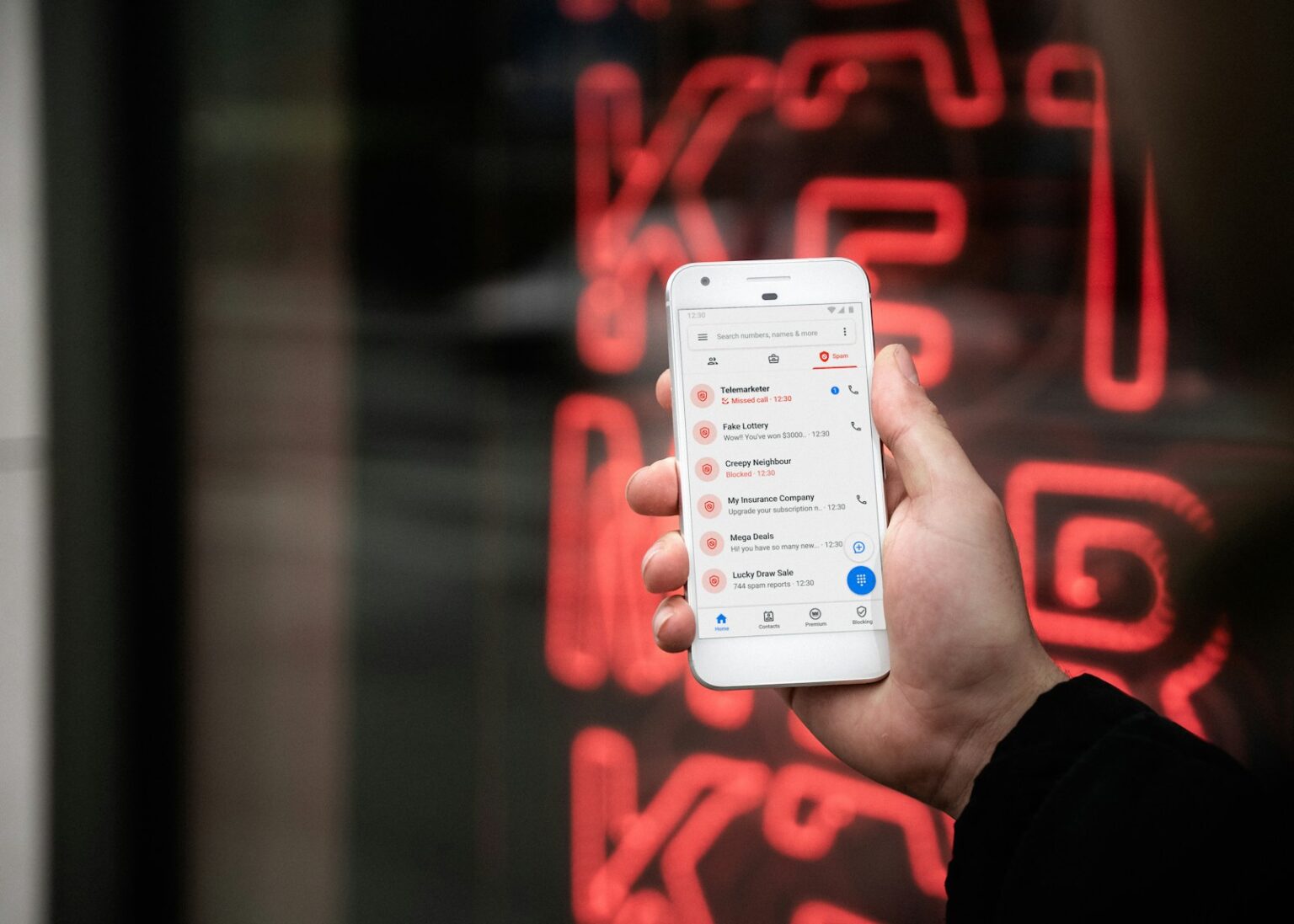The digital world harbors many dangers, with pretexting being a sneaky threat. This method tricks people through fake stories and false identities. What is pretexting in cyber security is a common question when people first learn about it.
Pretexting is a form of social engineering where attackers create fake scenarios to get victims to share sensitive info. Unlike other cyber attacks, pretexting targets the human element. It uses our natural trust and desire to help others.
Understanding the Basics of Pretexting
Pretexting involves creating a false situation or identity to gain trust. The attacker pretends to be someone they are not. They might pose as a bank representative, IT support, or a coworker. The goal is to trick the victim into revealing confidential info or performing actions they wouldn’t normally do.
The term “pretext” means a false reason given to justify an action. In cybersecurity, what is pretexting in cyber security becomes clear when we see attackers use these false reasons. They create believable and urgent stories.
Think of pretexting as digital acting. The attacker plays a role, complete with a backstory and motivation. They research their target beforehand to make their performance convincing. This preparation makes pretexting so dangerous and effective.
How Pretexting Attacks Work
A pretexting attack follows a predictable pattern. First, the attacker researches their target. They gather info from social media, company websites, and public records. This research helps them create a believable story and choose the right identity to impersonate.
Next, the attacker makes contact with the victim. This can happen through phone calls, emails, text messages, or in-person meetings. The attacker presents their fabricated story and starts building trust with the victim.
The story usually involves urgency or authority. For example, an attacker might claim to be from the IT department and say there’s a security breach that requires immediate action. They might ask for login credentials or request that the victim install software on their computer.
The success of pretexting relies on psychological manipulation. Attackers exploit common human traits like the desire to be helpful, respect for authority, and fear of consequences. They create scenarios where saying “no” seems rude or risky.
| Attack Phase | Attacker Actions | Victim Response |
|---|---|---|
| Research | Gathers target information from public sources | Unaware of being studied |
| Contact | Initiates communication with fabricated story | Receives unexpected but seemingly legitimate request |
| Trust Building | Uses research to appear credible and authoritative | Begins to trust the attacker’s identity |
| Exploitation | Requests sensitive information or actions | Complies due to established trust |
Common Types of Pretexting Attacks
Pretexting attacks come in many forms. Each type targets different vulnerabilities and uses different approaches to achieve the attacker’s goals.
Phone-Based Pretexting
Phone calls are a common method for pretexting attacks. Attackers call their targets and pretend to be from legitimate organizations. They might claim to be from the victim’s bank, credit card company, or phone service provider.
A typical phone-based attack might start with the caller claiming there’s suspicious activity on the victim’s account. They create urgency by saying the account will be frozen unless the victim verifies their information immediately. The caller already knows some basic information about the victim, which makes them seem legitimate.
Email-Based Pretexting
Email pretexting often looks like legitimate business communication. The attacker might impersonate a colleague, supervisor, or external partner. These emails often request urgent actions like wire transfers, password resets, or document sharing.
Business email compromise attacks frequently use pretexting techniques. An attacker might research a company’s organizational structure and then send an email pretending to be the CEO. The email might request an urgent wire transfer for a “confidential business deal.”
In-Person Pretexting
Physical pretexting involves face-to-face interaction. The attacker might pose as a delivery person, maintenance worker, or new employee. They use their physical presence and confident demeanor to gain access to restricted areas or information.
Tailgating is a common form of physical pretexting. The attacker follows an authorized person through a secure door, pretending to be an employee who forgot their access card. Most people are naturally helpful and will hold the door open for someone who appears to belong.
Real-World Examples of Pretexting
Understanding what is pretexting in cyber security becomes clearer when we look at real examples. These cases show how pretexting works in practice and the serious consequences it can have.
The Ubiquiti Networks Attack
In 2015, networking equipment manufacturer Ubiquiti Networks lost almost $47 million in a pretexting attack. The attackers compromised an employee’s email account in Hong Kong. They then used this access to impersonate company executives and request fraudulent wire transfers.
The attackers’ emails looked legitimate and came from the compromised account. They used official company language and referenced real business relationships. The accounting department processed the transfer requests because they appeared to come from authorized executives.
The Twitter Bitcoin Scam
In 2020, high-profile Twitter accounts were compromised in a massive social engineering attack. The attackers used pretexting techniques to gain access to Twitter’s internal systems. They called Twitter employees and pretended to be from the IT department.
The attackers created a sense of urgency by claiming there was a security issue that needed immediate attention. They convinced employees to provide access credentials by appearing to be legitimate internal support staff. This access allowed them to take over celebrity accounts and run cryptocurrency scams.
The “Are You Available?” Scam
A common pretexting technique starts with a simple question: “Are you available?” The attacker sends this message to test if the target is responsive. If the victim replies yes, the attacker knows they have an engaged target.
The follow-up message usually contains a request for help with an urgent matter. The attacker might ask the victim to purchase gift cards for a “client meeting” or to process an urgent payment. The initial “availability check” helps the attacker gauge whether the victim is likely to comply with requests.
Pretexting vs Other Cyber Attacks
Many people confuse pretexting with other types of cyber attacks. While these attacks share some similarities, they have important differences that affect how they work and how to defend against them.
Pretexting vs Phishing
Phishing and pretexting are both social engineering techniques, but they work differently. Phishing typically involves mass emails sent to many targets at once. These emails usually contain malicious links or attachments designed to steal information or install malware.
Pretexting is more targeted and personal. The attacker creates a specific story for each victim based on research. While phishing tries to catch as many victims as possible with a wide net, pretexting uses a focused approach to catch specific targets.
Pretexting often sets up future attacks, while phishing can be the attack itself. A pretexting call might gather information that the attacker uses later in a phishing email or other attack.
Pretexting vs Vishing and Smishing
Vishing (voice phishing) uses phone calls to trick victims, while smishing (SMS phishing) uses text messages. Both techniques can incorporate pretexting elements, but they’re not the same thing.
The key difference is in the story and preparation. Vishing and smishing often use generic approaches that could work on anyone. Pretexting involves creating a specific scenario tailored to the individual victim.
| Attack Type | Method | Targeting | Preparation Level |
|---|---|---|---|
| Phishing | Mass emails with malicious links | Broad, untargeted | Low to moderate |
| Pretexting | Personalized stories via various channels | Highly targeted | High |
| Vishing | Phone calls with deceptive requests | Broad to targeted | Low to moderate |
| Smishing | Text messages with malicious content | Broad, untargeted | Low |
Why Pretexting Works So Well
Understanding what is pretexting in cyber security requires examining why these attacks are so successful. Pretexting exploits fundamental aspects of human psychology that make us vulnerable to manipulation.
Authority and Trust
People naturally defer to authority figures. When someone claims to be from a bank, government agency, or company management, most people assume they should cooperate. Attackers exploit this tendency by impersonating authority figures and making requests that seem legitimate.
Trust builds quickly when someone demonstrates knowledge about our personal or professional lives. If a caller knows your bank account number or mentions your recent transactions, you’re more likely to believe they’re legitimate. This is why attackers invest time in research before making contact.
Urgency and Fear
Pretexting attacks often create artificial urgency. The attacker might claim that your account will be closed, your computer will be compromised, or your job will be at risk unless you act immediately. This urgency bypasses rational thinking and pushes people to act without careful consideration.
Fear is another powerful motivator. Attackers might threaten legal action, financial loss, or professional consequences. When people are afraid, they’re more likely to comply with requests to avoid negative outcomes.
Social Norms and Helpfulness
Most people want to be helpful and polite. Attackers take advantage of these positive traits by making requests that seem reasonable and important. Saying “no” to someone who claims to need urgent help feels rude or unprofessional.
The desire to avoid conflict makes people vulnerable to pretexting. Instead of questioning suspicious requests, victims often comply to avoid appearing uncooperative or difficult.
Warning Signs of Pretexting Attacks

Recognizing the signs of a pretexting attack is key to protection. While attackers try to appear legitimate, there are often red flags that reveal their true intentions.
Unsolicited Contact
Be suspicious of unexpected phone calls, emails, or visits from people claiming to represent organizations you deal with. Legitimate organizations rarely make unsolicited contact asking for sensitive information.
If someone contacts you claiming there’s a problem with your account or computer, independently verify this information. Call the organization directly using a phone number you trust, not one provided by the caller.
Pressure for Immediate Action
Legitimate organizations understand that people need time to make important decisions. If someone pressures you to act immediately without allowing time for verification, this is a major red flag.
Phrases like “This must be done right now” or “Your account will be closed in the next hour” are common in pretexting attacks. Real emergencies are rare, and legitimate organizations have procedures that don’t require immediate responses from customers.
Requests for Sensitive Information
Be cautious when anyone asks for passwords, Social Security numbers, bank account information, or other sensitive data. Legitimate organizations already have this information or have secure ways to verify your identity without asking for it over the phone or email.
If someone claims they need to “verify” your information by having you provide it, this is likely a pretexting attempt. Real verification processes don’t work this way.
Inconsistencies in the Story
When someone claims to be from your bank, pay close attention to their story. Look out for inconsistencies or vague answers to specific questions. These could be signs of deception.
If the person doesn’t know basic details about your account, such as the type or branch location, it’s a red flag. This lack of knowledge suggests they might not be who they claim to be.
Professional communication usually includes specific reference numbers, proper spelling and grammar, and consistent information. If you notice errors in these areas, it could be a sign of a pretexting attempt. This is a tactic used to gain your trust under false pretenses.
How to Protect Yourself from Pretexting
Protecting against pretexting requires awareness and practical steps. These attacks target our psychology, not technical weaknesses. So, the defense must change our behavior and set up verification procedures.
Verification Procedures
Always verify the identity of anyone asking for sensitive information. If someone claims to be from your bank, hang up and call the bank directly. Use a number from your statements or their official website.
Don’t use contact info given by the person making the request. Attackers often provide fake numbers leading to confederates who confirm their story. Use only verified contact info from official sources.
Information Sharing Policies
Set clear policies on what info you’ll share and when. Never provide passwords, account numbers, or personal info to unsolicited callers, no matter who they claim to be.
Legitimate organizations already have your info. If someone asks for your Social Security number or account info, ask them to verify your identity first. Tell them what they have on file.
Secure Communication Channels
Use official channels for communication when possible. If your bank needs to contact you, they’ll use secure messaging through your online banking portal or send letters by mail.
Be wary of urgent messages through unofficial channels. A real emergency from your bank or employer will use multiple communication methods. They won’t rely solely on immediate phone responses.
Organizational Protection Against Pretexting
Companies face significant risks from pretexting attacks. These can lead to financial losses, data breaches, and damage to reputation. Effective protection requires both technical measures and employee training.
Employee Training Programs
Regular training helps employees recognize and respond to pretexting attempts. Training should include real-world examples and practice scenarios. Employees need to understand that questioning suspicious requests is part of their job, not a sign of being unhelpful.
Training should cover the psychology of pretexting and explain why these attacks are so effective. When employees understand how manipulation works, they’re better equipped to resist it.
Verification Protocols
Organizations should establish clear protocols for verifying requests for sensitive information or financial transactions. These protocols should require multiple forms of verification and involve multiple people when possible.
For example, any request for a wire transfer should require confirmation through multiple communication channels and approval from multiple authorized individuals. This makes it much harder for pretexting attacks to succeed.
Access Controls and Monitoring
Technical controls can limit the damage from successful pretexting attacks. Multi-factor authentication makes it harder for attackers to use stolen credentials. Regular monitoring of financial transactions and system access can help detect suspicious activity quickly.
Access controls should follow the principle of least privilege. Employees should only have access to the information and systems they need for their specific roles. This limits the damage if their credentials are compromised through pretexting.
| Protection Strategy | Individual Benefits | Organizational Benefits |
|---|---|---|
| Verification Procedures | Prevents personal information theft | Reduces successful attack rate |
| Employee Training | Increases awareness and confidence | Creates culture of security awareness |
| Multi-factor Authentication | Protects personal accounts | Prevents unauthorized access |
| Access Controls | Limits exposure to sensitive data | Minimizes possible damage |
The Psychology Behind Pretexting

To fully understand what is pretexting in cyber security, we must examine the psychological principles behind it. Pretexting succeeds because it exploits cognitive biases and social conditioning that affect everyone.
Cognitive Biases
Humans rely on mental shortcuts called cognitive biases to make quick decisions. These biases help us navigate daily life efficiently. Yet, attackers exploit them for malicious purposes.
The authority bias makes us more likely to comply with requests from perceived authority figures. The urgency bias causes us to make quick decisions when we feel time pressure. The confirmation bias leads us to accept information that confirms what we already believe or expect.
Social Engineering Principles
Pretexting uses several key social engineering principles. Reciprocity makes us feel obligated to help someone who has helped us or appears to be helping us. Social proof influences us to do what others are doing or what seems normal in a given situation.
Scarcity creates urgency by suggesting that opportunities are limited or time-sensitive. Commitment and consistency encourage us to follow through on decisions or statements we’ve made, even when circumstances change.
Technology’s Role in Modern Pretexting
Technology has enabled more sophisticated pretexting attacks and provided tools for defense. Understanding how technology affects pretexting is critical for protection.
Information Gathering Tools
Social media and public databases make it easier for attackers to research their targets. A few minutes of online searching can reveal employment history, family relationships, interests, and recent activities.
Professional networking sites like LinkedIn provide detailed information about job roles, company structures, and business relationships. This information helps attackers create more convincing pretexts and choose appropriate authority figures to impersonate.
Communication Technology
Modern communication tools give attackers new ways to contact victims and appear legitimate. Caller ID spoofing makes phone numbers appear to come from trusted organizations. Email spoofing allows attackers to send messages that seem to come from legitimate addresses.
Video calls and voice changing technology can make impersonation more convincing. Attackers can now use technology to make their pretexts more believable than ever before.
Artificial Intelligence and Deepfakes
Emerging technologies like artificial intelligence and deepfakes represent the next evolution in pretexting attacks. AI can analyze social media posts to create personalized messages that seem genuinely familiar and relevant.
Deepfake technology can create convincing audio and video of people saying things they never actually said. This technology could make pretexting attacks incredibly sophisticated and difficult to detect.
Legal and Ethical Considerations
Understanding what is pretexting in cyber security includes recognizing the legal and ethical dimensions of these attacks. Pretexting often violates multiple laws and ethical principles.
Legal Consequences
Pretexting attacks can violate numerous laws depending on their specific methods and targets. Wire fraud, identity theft, computer fraud, and financial crimes statutes all apply to different types of pretexting attacks.
The legal penalties for pretexting can be severe, including significant fines and prison time. Law enforcement agencies increasingly prioritize these crimes as they recognize their serious impact on individuals and organizations.
Regulatory Compliance
Organizations must consider how pretexting attacks affect their regulatory compliance obligations. Data breach notification laws may require companies to report successful pretexting attacks that compromise personal information.
Financial institutions face particular scrutiny regarding their defenses against social engineering attacks. Regulators expect banks and other financial companies to have robust procedures for preventing pretexting attacks that could lead to unauthorized transactions.
Future Trends in Pretexting
As technology evolves, so do pretexting techniques. Understanding emerging trends helps organizations and individuals prepare for future threats.
Increased Sophistication
Pretexting attacks are becoming more sophisticated as attackers gain access to better tools and information sources. The increasing amount of personal information available online makes it easier to create convincing pretexts.
Attackers are also becoming more patient and persistent. Instead of making single contact attempts, they’re building longer-term relationships with their targets to increase trust and credibility.
Hybrid Attack Methods
Modern pretexting often combines multiple attack vectors in coordinated campaigns. An attacker might start with social media research, followed by a pretexting phone call, and then a follow-up phishing email that references the earlier conversation.
These hybrid approaches are harder to detect because they span multiple communication channels and time periods. The coordination between different attack methods makes them more convincing and effective.
Building a Security-Conscious Culture
The most effective defense against pretexting is creating a culture where security awareness is everyone’s responsibility. This cultural change requires ongoing effort and commitment from leadership.
Leadership Commitment
Security culture starts at the top. Leaders must demonstrate their commitment to security by following established procedures themselves and supporting employees who report suspicious activities.
When leaders take shortcuts or pressure employees to bypass security procedures, it creates an environment where pretexting attacks are more likely to succeed. Consistent leadership support for security practices is essential.
Continuous Learning
Security awareness training cannot be a one-time event. As pretexting techniques evolve, training must adapt to address new threats and methods. Regular updates and refresher training help maintain awareness levels.
Real-world examples and current event discussions help keep security awareness relevant and engaging. When employees see how pretexting affects other organizations, they better understand why security procedures matter.
Conclusion
Understanding what is pretexting in cyber security is essential for anyone using technology. These attacks succeed because they target human psychology. They exploit our natural tendencies to trust, help others, and respond to authority.
The key to protection lies in awareness, verification, and consistent security practices. By understanding how pretexting works and maintaining healthy skepticism about unsolicited requests, we can significantly reduce our risk of becoming victims.
Organizations must invest in both technical controls and human training to defend against pretexting effectively. The human element remains both the weakest link and the strongest defense in cybersecurity.
As technology continues to evolve, pretexting attacks will become more sophisticated and harder to detect. Yet, the fundamental principles of verification, awareness, and caution will always be relevant. By applying these principles consistently, we can protect ourselves and our organizations from even the most clever pretexting attempts.
Remember that what is pretexting in cyber security is ultimately about human manipulation disguised as legitimate communication. When in doubt, verify independently. When pressured to act quickly, slow down and think carefully. These simple principles can prevent most pretexting attacks from succeeding.
The fight against pretexting requires ongoing vigilance and adaptation. As attackers develop new techniques, defenders must continue learning and improving their protective measures. By working together and sharing knowledge about these threats, we can create a more secure digital environment for everyone.
Understanding what is pretexting in cyber security means recognizing that everyone has a role to play in defense. Whether you’re an individual protecting your personal information or a business leader safeguarding organizational assets, awareness and preparation are your best weapons against these deceptive attacks.
























